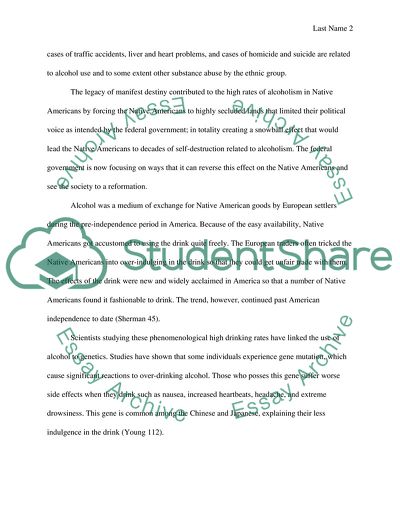Cite this document
(Fighting the Issue of Alcoholism among Native American Population Assignment, n.d.)
Fighting the Issue of Alcoholism among Native American Population Assignment. https://studentshare.org/social-science/1772891-how-we-can-help-native-americans-and-there-fight-with-alcoholism-in-the-native-american-family-on-a-federal-level-though-the-school-system-and-family-lives
Fighting the Issue of Alcoholism among Native American Population Assignment. https://studentshare.org/social-science/1772891-how-we-can-help-native-americans-and-there-fight-with-alcoholism-in-the-native-american-family-on-a-federal-level-though-the-school-system-and-family-lives
(Fighting the Issue of Alcoholism Among Native American Population Assignment)
Fighting the Issue of Alcoholism Among Native American Population Assignment. https://studentshare.org/social-science/1772891-how-we-can-help-native-americans-and-there-fight-with-alcoholism-in-the-native-american-family-on-a-federal-level-though-the-school-system-and-family-lives.
Fighting the Issue of Alcoholism Among Native American Population Assignment. https://studentshare.org/social-science/1772891-how-we-can-help-native-americans-and-there-fight-with-alcoholism-in-the-native-american-family-on-a-federal-level-though-the-school-system-and-family-lives.
“Fighting the Issue of Alcoholism Among Native American Population Assignment”. https://studentshare.org/social-science/1772891-how-we-can-help-native-americans-and-there-fight-with-alcoholism-in-the-native-american-family-on-a-federal-level-though-the-school-system-and-family-lives.


